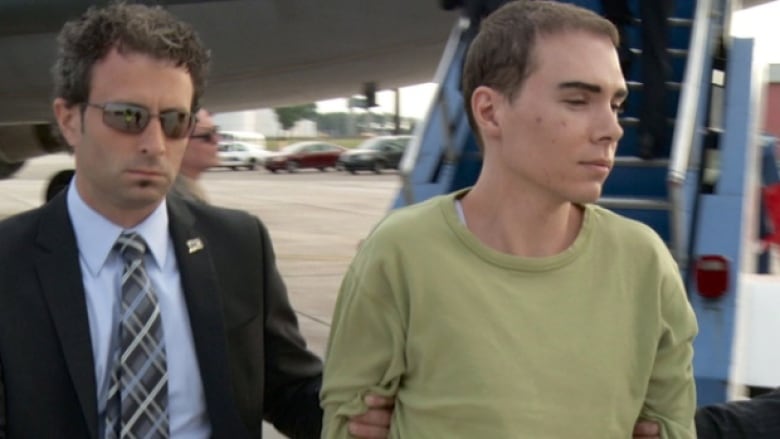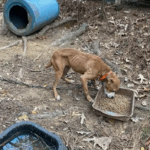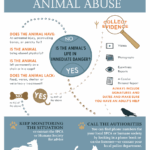On the periphery of violent crime and the often murky waters of animal rights in society, lies a disturbing case that captivated international attention: the saga of Luka Magnotta. In the realm of crime, the narratives often intertwine, revealing aspects of human behavior that challenge our perceptions of morality and compassion. One significant facet of Lukka Magnotta’s background is his prior involvement in animal cruelty, an aspect that raises profound questions about our legal systems and societal responsibilities towards all living beings.
The timeline is pivotal when delving into Magnotta’s past. Before he became infamous for the murder of Chinese international student Jun Lin in 2012, Magnotta was implicated in a notorious animal cruelty incident in 2010. This episode involved the shocking act of filming himself committing distressing and violent acts towards kittens. Such behaviors signal a deep-seated disregard for sentient life, a hallmark of psychopathic tendencies that are often evident in a broader spectrum of criminality.
In a puzzling revelation, this previous behavior falls into the historical context of behaviors exhibited by some convicted murderers. Research suggests that animal cruelty is frequently a precursor, a dark foreshadowing of future violence against humans. While not all individuals who display cruelty towards animals progress to more heinous acts, the correlation remains unsettling. With Magnotta, his actions concerning animals were not mere petulance; they symbolized a burgeoning detachment from empathy, a chilling precursor to his later actions.
The internet played a role in both the exposure and the perpetration of these heinous acts. Magnotta’s cruelty was documented and disseminated through various online platforms, creating a spectacle that horrified viewers and elicited outrage from animal rights activists worldwide. Communities rallied for justice, demanding accountability and a societal shift towards zero tolerance regarding such inhumane acts. However, the legal resolution of Magnotta’s case left many disillusioned. The question arose: why do some individuals escape the full breadth of legal repercussions for actions that should unequivocally warrant condemnation?
Following the public outcry, Magnotta was not charged with animal cruelty until much later, weaving in narrative threads of justice denied and intervention too late. The legal system, in this instance, appeared sluggish, mired in bureaucracy rather than urgency. The eventual charge came only as a footnote in a far graver saga of his murder trial, illustrating how swiftly the narrative shifted from animals to humans, often to the detriment of animal rights considerations.
As we scrutinize the implications of these events, it’s crucial to reflect on the societal paradigms that allow such trajectories to unfold. Why are acts of violence against animals often relegated to the margins of public consciousness? When Magnotta was eventually sentenced for his gruesome act of murder, it was evident that the ramifications of his previous acts of animal cruelty could easily have been overlooked. This oversight speaks volumes about societal attitudes towards animals, which are often seen as lesser beings deserving of less protection than humans.
While animal rights activists work tirelessly to instill a sense of responsibility and advocacy, society must confront the troubling reality that many still view such acts as trivial. This lack of recognition inhibits the development of robust legal frameworks that would effectively punish and deter future animal cruelty. Furthermore, this indifference can perpetuate cycles of violence, conditioning individuals like Magnotta to believe they might operate without consequences.
The need for comprehensive reform cannot be overstated. Legislative bodies must recognize the interconnectedness of violence—acknowledging that cruelty to animals is not an isolated act, but a potential precursor to more severe forms of violence. By enforcing stricter laws on animal abuse, society not only protects vulnerable creatures but can also prevent the escalation of violent behavior among individuals who exhibit a consistent pattern of cruelty.
In an age marked by progressive views on animal rights, there exists a unique opportunity for advocates to reinforce the narrative surrounding the protection of all sentient beings. Activists and ordinary citizens alike can unite, armed with knowledge, to advocate for animals and hold individuals accountable for their actions. A unified front could catalyze impactful change, compelling lawmakers to establish stringent consequences for animal cruelty and setting a firmer precedent within our cultural lexicon.
Perhaps the most illuminating query to consider is: what does Magnotta’s trajectory reveal about our society? His case urges us to examine the collective apathy towards animals and the failures inherent within legal systems to protect them. The shifting perspective begins with education, dialogue, and dedicated action towards creating a culture that unequivocally denounces animal cruelty. As observers of this ongoing narrative, it becomes imperative to ask oneself: will we remain passive spectators, or will we become active participants in championing the inherent rights of all living beings?
In conclusion, the intertwining fates of Luka Magnotta and the animals he harmed serve as a grim reminder of the responsibilities we hold towards every creature. The story is layered and complex, urging society to introspect and provoke dialogue around the perceived hierarchy of life. The promise for change resides within our capability to shift perspectives, churning discontent into action, and perfecting our approach to justice—both for the innocent victims and for ourselves as a compassionate society.






